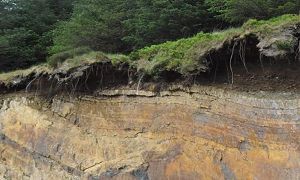CZ Science 4. Land-atmosphere exchange
Grades 15 -
16
Climatology/Meteorology • Hydrology • SoilScience/Pedology
Curriculum
Educational Objectives
By the end of this module students will be able to:
- Trace primary radiative forcings through the Critical Zone using data derived from a CZO field site.
- Use CZO micro meteorological data to describe the differences between the main atmospheric fluxes at each CZO site.
- Relate carbon flux data collected at various scales to understand the regional exchange of carbon at a CZO site.
- Analyze how energy, carbon, and nutrients flow through the Critical Zone and drive Critical Zone processes.
More on this module's objectives can be found here.
Audience
Higher Education
Observatory: National CZO
Author(s): Jim Washburne (The University of Arizona)
Contact(s):
Funding: InTeGrate: Interdisciplinary Teaching about Earth for a Sustainable Future Banner, Critical Zone Science
Related Resource(s):
- CZ Science 0. Undergrad course (7 modules)
- CZ Science 1. Critical Zone background
- CZ Science 2. Methods of Critical Zone Science
- CZ Science 3. Critical Zone architecture & evolution
- CZ Science 5. Water transfer through the Critical Zone
- CZ Science 6. Geochemistry & biogeochemistry
- CZ Science 7. Humans in the Critical Zone
Details for this Resource
The two units of this module follow a similar structure (introduction, data exploration, data analysis, and synthesis) to facilitate student and teacher use. Many of the activities include fact-based queries but also include the construction of various graphs. The main summative activity is at the end of the second unit where the students must construct a testable hypothesis linking ecosystem function with energy and carbon fluxes.
-
Unit 4.1: Energy Budgets (Two 75 min class sessions)
- Analyze energy flux data collected at a CZO site of interest and calculate reference ET.
-
Unit 4.2 Carbon Budgets (Two 75 min class sessions)
- Analyze carbon flux data collected at an Ameriflux site of interest to better understand the regional exchange of carbon.
Explore Further



